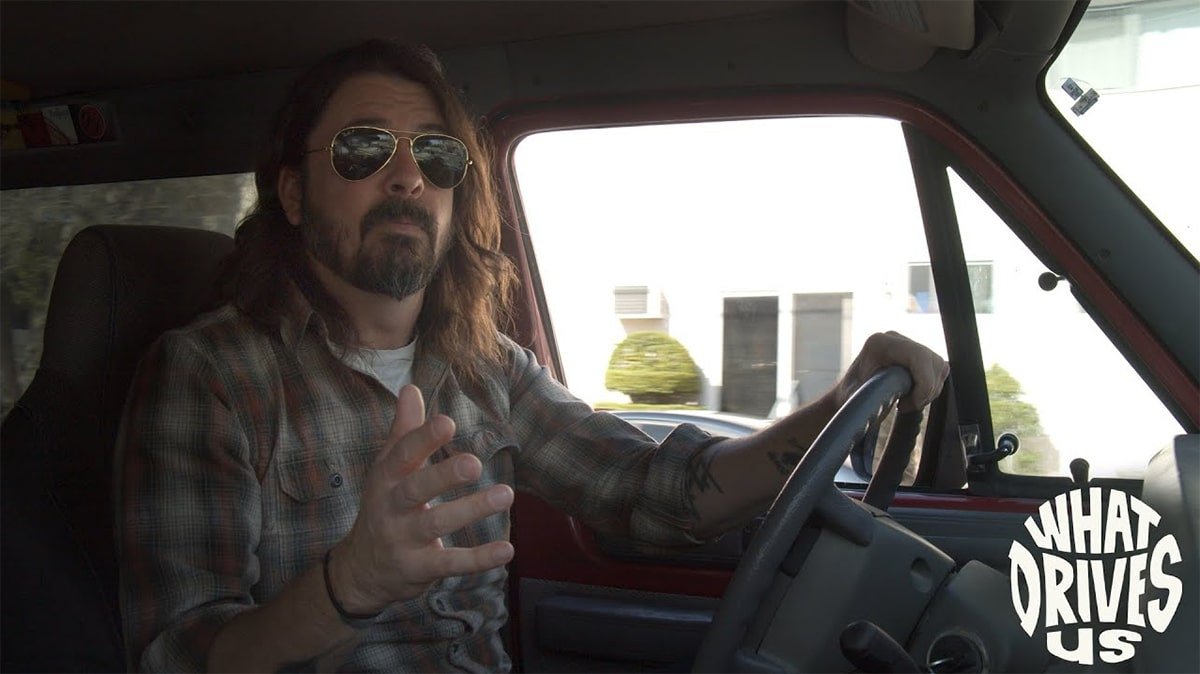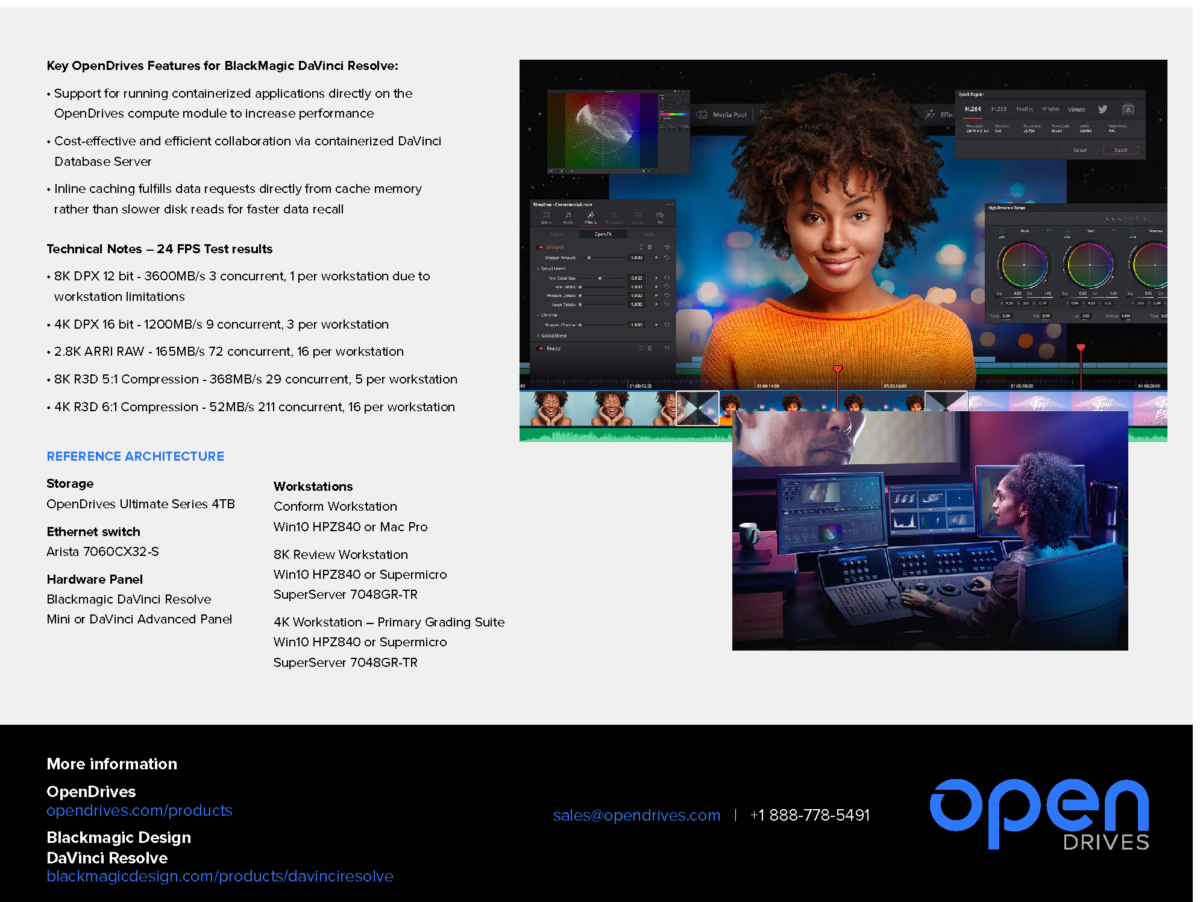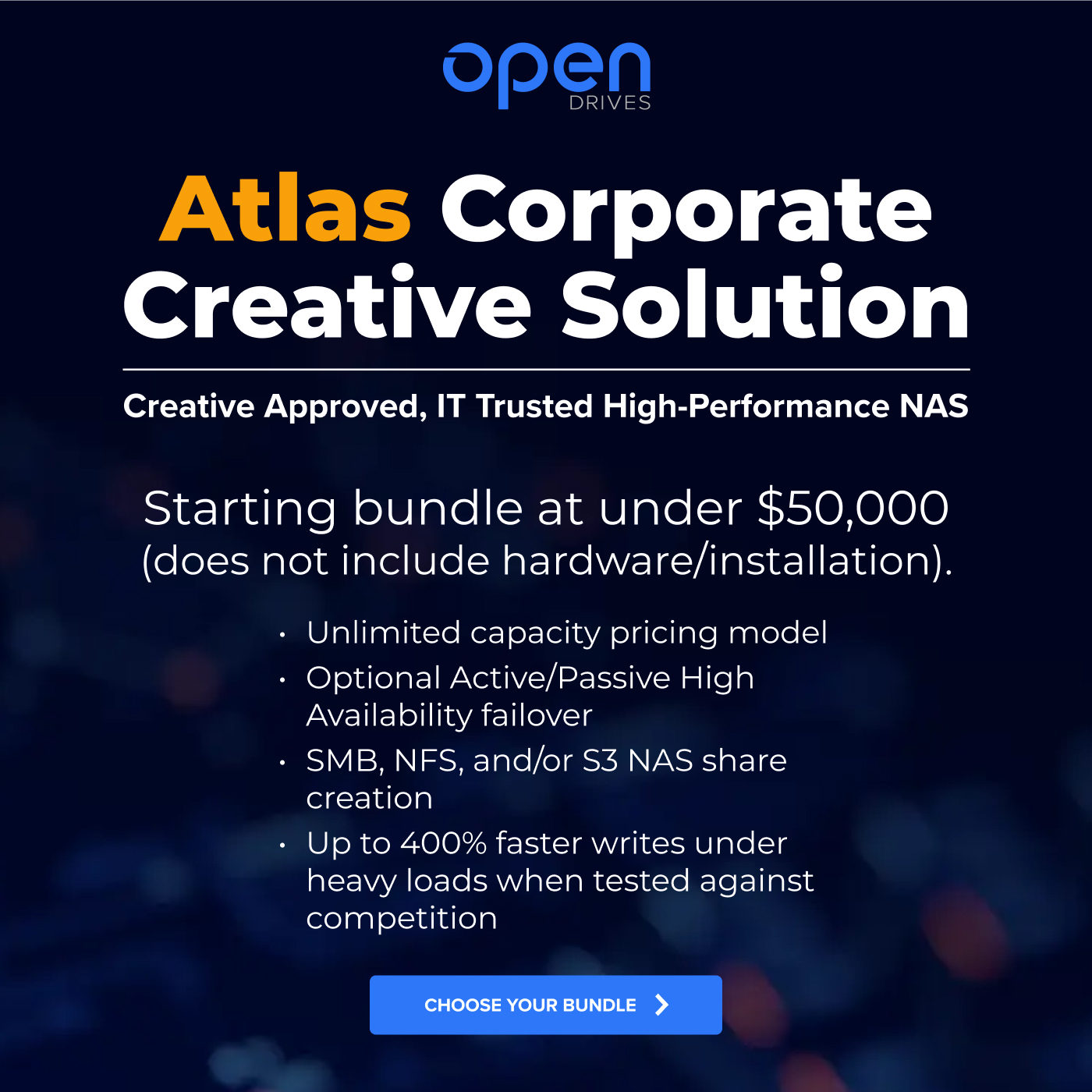OpenDrives powers Dave Grohl’s “What Drives Us” documentary
The Challenge
Shooting a new type of musical documentary about life on the road using 4K RAW footage is challenging enough, but when the COVID-19 pandemic swept the globe, it forced Dave Grohl and Jim Rota to halt midstream, then incorporate a whole new level of technical innovation. Post-production activities are geared around close collaboration in tight working environments supported by on-premise IT infrastructures, making it easier for creatives and editors to ideate, iterate, and tell the right story in the final cut. With the indefinite closure of most post-production studios, Grohl and Rota had to develop a workaround workflow that enabled remote editing and post-production efforts without performance-induced delays.
The Solution
After experimenting with and ultimately rejecting a cloud-based remote workflow, Rota turned to OpenDrives. He was very familiar with our enterprise storage solutions and our support of Blackmagic Resolve. The timing was aligned, as OpenDrives had just finalized the reference architecture for and was ready to deploy its new remote workflow solution, OpenDrives Anywhere. This solution doesn’t require major changes to existing OpenDrives deployments, but it enables creatives and editors who are working from remote locations to interface with on-premise IT infrastructure without noticeable performance degradation. In accordance with the OpenDrives Anywhere deployment architecture, we created a cluster of workstations along with an Optimum data storage system in a private cloud to serve as the on-premise infrastructure. The partnership solved a problem for Grohl and Rota, and it gave us the opportunity to showcase this innovative solution.
The Result
Remote users—creatives and editors working to create the final documentary—could interface with this equipment from anywhere using secure connections, with no detectable performance hits. Loading, playback, scrubbing, and other actions were seamless and uninterrupted. In the words of one editor, who was based in Chicago but worked using the post-production technology co-located in Los Angeles, it was “the closest thing to being in the room that we can imagine.”




